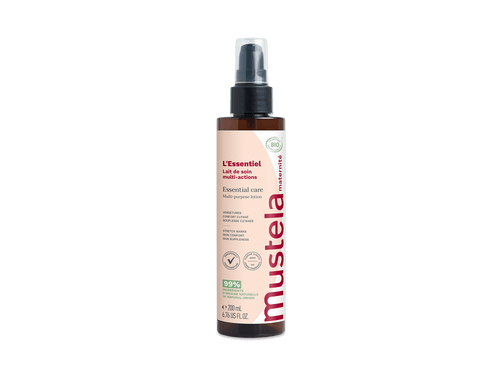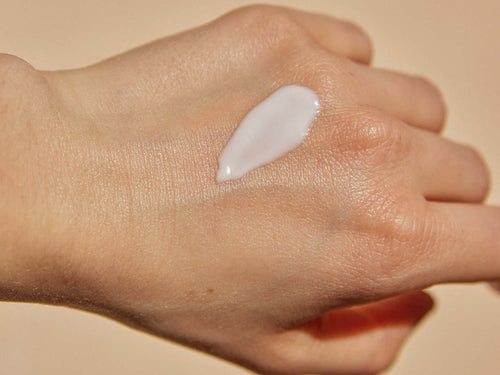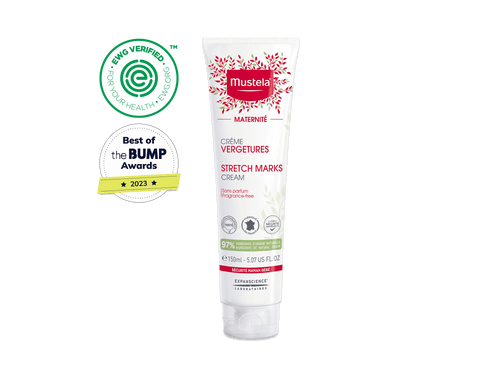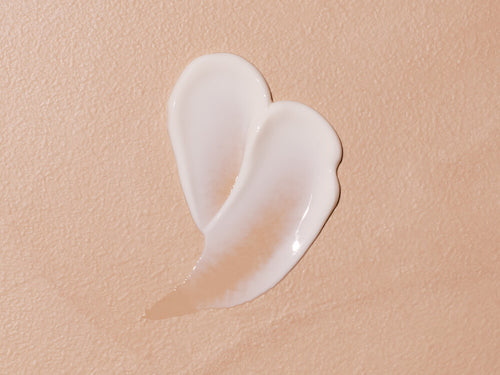“How often should I pump?” “How long should I pump each session?” “How much milk should I be pumping?”
Do these questions sound familiar? If so, you’ve come to the right place!
When it comes to establishing a feeding schedule with your little one, breastfeeding and pumping each has its own set of challenges. With a little help from our baby experts at Mustela, you’ll be on your way to breast-pumping success in no time.
- In this guide, we’ll answer some of the most common pumping questions so you and your baby can enjoy feeding time together in harmony.
Table Of Contents
- The Benefits Of Pumping
- Pumping Considerations
- Common Breast Pumping Questions
- Tips For Successful Pumping
- Remember To Take Care Of Your Body
The Benefits Of Pumping

Whether you’re exclusively pumping or using a combination of both pumping and breastfeeding to keep your newborn full, there are many benefits to incorporating pumping into your baby’s feeding schedule.
Perhaps the most obvious benefit of pumping is that it allows your partner or other family members to be involved in feedings. This can take a lot of pressure off new mothers and might allow time for you to recharge while others care for your little one.
Pumping can also help maintain and even increase breast milk supply. Because the pump stimulates milk production, establishing and maintaining a consistent pumping schedule can boost your body’s ability to let down milk.
In addition, if you’re breastfeeding as well as pumping, pumping can give your nipples a break and help prevent them from cracking and hurting.
If your little one is having difficulty latching, it can also relieve some stress while still ensuring your baby gets enough milk.
Like many new moms, you might find yourself asking questions like, “How often should I pump?” and “How much milk should I be expressing with each pumping session?”
Don’t stress — we’ve got all the answers to your most common pumping questions below!
But first, let's look at some common drawbacks to pumping.
Pumping Considerations
Pumping may not be right for every mother-baby pair. That said, there are a few things to keep in mind when introducing pumping into your feeding schedule.
For starters, you might not get as much milk with the pump as you do while breastfeeding. This can cause feelings of frustration or guilt, which can be discouraging when trying to establish a pumping routine.
Second, some women find pumping uncomfortable. You may experience discomfort while expressing milk with the pump, making it challenging to stick to your schedule and maintain your supply.
In addition, some babies don't adjust to a bottle after being used to the breast. If your little one is having difficulty transitioning, you may need to experiment with different types of bottles and nipples before finding the right combination.
And, finally, pumping takes time! It’s not uncommon for mothers to spend a couple of hours per day pumping, which could be spent doing other things. It’s a big commitment.
But despite the downsides, many moms find that including pumping in their routine is well worth the effort.
If you’re still unsure if it’s right for you, keep reading!
Common Breast Pumping Questions

What Supplies Do I Need To Pump?
Before you start your pumping journey, you’ll need to gather the necessary supplies. At the top of your must-have list is a reliable pump.
There are various pumps on the market, from manual to electric. Consider your lifestyle, budget, and preferences to determine which pump works best for you.
If you opt for an electric pump, some moms prefer to keep a manual one on hand for a backup. This can come in handy if your primary pump breaks or the power goes out, and you can’t plug it in.
Besides the pump, you’ll also need sterilized bottles or bags with lids to store your milk in and a marker for labeling them. You'll want a soft cooler and some ice packs if you're out and about, too. That way, your milk doesn't spoil before you get a chance to put it in the freezer.
Nursing pads are also a postpartum must-have for pumping (or nursing) moms. They help keep your clothes dry and protect against embarrassing leaks.
And since pumping can make your nipples tender at first, get some of our Organic Nursing Comfort Balm to ease your discomfort. It’s made from food-grade ingredients so you don’t have to worry about rinsing it before breastfeeding.
Also, while they aren't necessary, you can find plenty of hands-free pumping bras on the market nowadays. These bras provide maximum convenience and let you multitask while you pump.
Will My Insurance Cover A Pump?
In many cases, yes. All marketplace insurance plans must now cover breast pumps. However, the company can determine if it will provide a pump you keep or if it'll have rental units you can use as long as you need one.
Insurers can also decide to either do manual or electric pumps. So, if your coverage only provides a manual pump, but you want an electric one, you may have to pay for that out of pocket.
Contact your insurance provider to find out what kind of coverage you have. They should be able to provide you with a list of covered items and any additional out-of-pocket costs you may incur.
Other options exist if your insurance doesn’t have a pump benefit. For example, Women, Infants, and Children (WIC) programs and local hospitals may have free or low-cost breast pumps available.
Remember that a pump isn't something you want to borrow from a friend or buy at a thrift store. It can carry bacteria, germs, and viruses from other users.
Make sure to get a new pump or a hospital-grade one that is certified for reuse. These come with a new accessory kit, so you don’t have to worry about contamination.
How Often Should I Pump?

The answer to this question is a lot simpler than you might think.
If you’re exclusively pumping, it’s best to mimic your little one’s feeding schedule by pumping every two to three hours, particularly during the first few weeks of their life. This helps maintain a healthy, consistent milk supply.
Pumping this often will total roughly eight or more pumping sessions per 24-hour period — close to or the same as the amount your little one would feed if exclusively nursing.
If you’re pumping as well as breastfeeding, on the other hand, the frequency of your pumping sessions may vary.
Finally, if you’re pumping to increase milk supply or because you want to begin storing your breast milk, you should aim to pump either an hour before or after breastfeeding for best results.
Some women may find that they’re able to pump from one breast while nursing from the other. Others find it easiest to pump in the mornings when breasts tend to be naturally fuller.
Try using a combination of these methods to see which works best for you and your little one.
How Long Should I Pump Per Session?
As for how long you should aim to pump per session, the general consensus is that 15 to 20 minutes per breast is a great place to start.
You may find that this timeframe isn’t quite long enough for your breasts to feel well-drained. If that’s the case, pump until your milk supply begins to slow down, but try not to exceed 30 minutes of pumping per breast in one sitting.

How Much Milk Should I Pump?
If you’re exclusively pumping, it’s ideal to aim for 25 ounces of breastmilk expressed over a 24-hour period. Keep in mind that this is a guideline rather than a hard-and-fast rule, so don’t be discouraged if you’re not able to produce that much.
If you’re pumping in addition to breastfeeding, the amount you should aim to express in a pumping session will vary. Try dividing the amount of milk your little one needs per day by the amount of time you’ll be away from them to help you determine how much milk you’ll need.
In either case, the amount of milk you’re able to express per pumping session depends on a variety of factors, from the type of pump you’re using to the amount of stress you might be feeling that day.
Go easy on yourself and understand that fluctuations in milk production are a normal part of breast pumping.
When Can I Start Pumping?
The best time to start pumping is when you feel comfortable and ready. Some moms begin pumping at the hospital shortly after birth, while others wait a few weeks.
How Should I Store Breast Milk?
When it comes to the optimal way to store breast milk, you have a few options to ensure you’re able to get the best use out of your milk.
Many pumps come with specially designed containers that allow you to collect and store your breast milk mess-free. You can also purchase breast milk bags to store your milk.
It’s best to store breast milk in small quantities, particularly if you’ll be freezing it. Try to limit each bag or container to around three or four ounces to allow for expansion and to make it a simple process when you thaw milk for each feeding.
Breast milk generally keeps in the refrigerator for up to four days, and it can be kept in the freezer for six to 12 months.
Don’t forget to write the date and the amount of milk on each bag before you store it — you’ll thank yourself later!
How Do I Prepare Frozen Milk For Feeding?
To get your milk ready to feed your baby, simply hold the bag under warm, running water until it’s thawed. You could also put the bag in the fridge the night before so it’s thawed in the morning.
Once the milk thaws, pour it into a bottle and shake it gently in case the fatty parts have separated from the liquid.
Then, you can feed it to your baby cold or warm it up first by placing it in a bowl of warm water for a little while. If you opt to warm it, test the milk on your inner arm or wrist to ensure it isn't too hot.
Can I Pump At Work?
Once you go back to work, you’ll likely want to continue pumping. And while most employers are accommodating, some might feel disgruntled that you’ll need to take regular breaks to pump. Thankfully, the law is on your side.
The 2010 Break Time for Nursing Mothers Act established that employers must provide reasonable breaks for moms to pump whenever they need to for up to a year after giving birth. In addition, they must provide a private location to pump that isn't in a bathroom.
However, this law is only for people eligible for overtime pay. If you're salaried, the current law doesn't cover you.
But that's changing soon. The Fiscal Year 2023 Omnibus Spending Bill that the president signed into law in late 2022 included the PUMP for Nursing Mothers Act.
This bill expands the current protections for nursing moms, including which employees are included, and extends the time frame from one year to two.
Tips For Successful Pumping

Now that we’ve answered your burning questions about pumping, it’s time for a few tips to help you succeed on your pumping journey.
- Drink water while you pump. You’ve got to stay hydrated to produce milk, so get in the habit of sipping on water while you’re pumping. Try making fruit-infused water if you have trouble getting enough plain water down.
- Dress appropriately for pumping. Wear comfortable clothing that won't get in the way or restrict movement. Dresses and pumping don't usually go together, so if you need to dress up for an occasion, consider investing in a special nursing dress that has easy access.
- Stay organized. Breast pumps have many parts, so it’s important to keep them all together. Otherwise, you’ll waste too much time looking for pieces when your body is ready to go. Keep everything in one spot and always put it back there when you’re done.
- Get comfortable. Pumping takes some time. Find a private area where you feel safe and can relax. This will help your letdown reflex kick in so your milk flows better.
- Prepare your breasts with a massage. Before you hook up the pump, take a few minutes to massage your breasts and compress them gently to help get them ready for pumping.
- Wash your pump immediately after use. This will help keep it clean and prevent bacteria from growing.
- Be consistent with your schedule. Consistency is key in milk production, so try to pump at the same time each day if possible.
- Look at pictures of your baby. Sometimes, your milk doesn't come out right away when you start pumping. If you're having trouble with let-down, look at a few pictures of your precious baby or watch some videos of them. This reminder can help your body relax.
- Set realistic expectations and goals. Everyone's pumping experience is different, so don't compare yourself to others or set unrealistic goals that you'll feel guilty about not hitting.
Above all, be patient with yourself. Pumping takes some time to get used to. But you’ll get the hang of it eventually. And when you do, it’s a great way to keep your baby nourished and healthy!
Remember To Take Care Of Your Body
As important as it is to make sure your little one is well-fed, it’s equally important to make sure you’re taking care of your own body, too.
For starters, practice basic self-care — that means plenty of hydration, a well-balanced diet, and getting enough sleep. Creating milk for your little one is a big job that requires a lot of energy!
Since looking after your new bundle of joy usually takes priority, mental health is another aspect of self-care that often gets overlooked by new moms. However, it’s crucial to make time for yourself and the activities that you enjoy to keep your mental health in check.
One way to do this is to set aside a few minutes per day to care for your postpartum skin. Because we know how important skin care is, our maternity products have been specially formulated for new moms to help you feel your best.
From our Nursing Comfort Balm to soothe and restore sore nipples to our Multi-purpose Balm with 3 Avocado Extracts to nourish and repair your skin, we’re here to support your postpartum journey every step of the way.
Our powerful Stretch Marks Cream and Stretch Marks Oil help reduce the appearance of stretch marks, leaving your skin restored, refreshed, and noticeably smoother.
With naturally derived ingredients and gentle formulas, you can take comfort in knowing our products are safe to use whether you’re pumping, breastfeeding, or doing a combination of the two.
How Often Should I Pump: Your Questions Answered

Motherhood doesn’t come with an instruction manual, so it’s natural for you to have plenty of questions when it comes to feeding your little one.
From “how often should I pump” to “how long should I pump each session,” we hope you’ve found answers to some of the most common breast pumping questions here. By following our tips, you and your baby can establish the right feeding method and schedule for your needs.
Remember to take care of your physical and mental health as well, and look after your breasts with our maternity skincare products, including Nursing Comfort Balm to support your postpartum journey.
Happy pumping!












